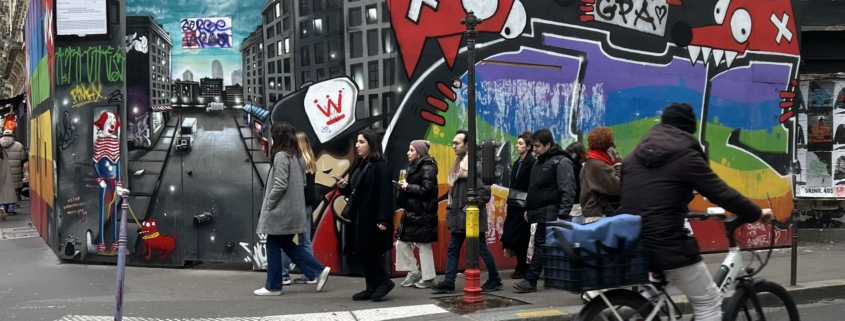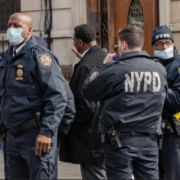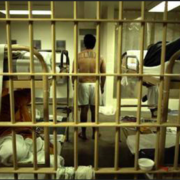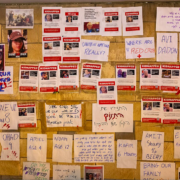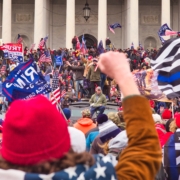My Go-To scholarly books on graffiti
Numerous English language books have been written and published on the subject of contemporary Graffiti and Street Art.
A subset of these publications have focused almost exclusively on graffiti.
This work falls into a handful of genres ranging from coffee table books to academic and scholarly efforts.
Least prevalent are a handful scholarly/academic (I use these terms interchangeably) reference books such as Anna Waclawek’s Graffiti and Street Art (2011), Konstantinos Avramidis and Myrto Tsilimpounidi’s Graffiti and Street Art (2016), and my Routledge Handbook of Graffiti and Street Art (2016).
Most books on graffiti appear to be large format coffee table ones that primarily consist of photographs depicting the subject matter. They focus on the work of one particular writer or artist, or graffiti and street art that appears in a single city or country.
Sandwiched in between these types of publications, are a growing number of academic books, most of which have been released by university presses and treat the subject of graffiti, and the people who engage and respond to this activity in a thoughtful, comprehensive, and considered manner. They also understand and convey the complexity of the subject matter.
All of these books, serve different purposes, but if you are looking for thoughtful scholarly treatments of the subject matter, I have a handful of recommendations.
Also, although it might be tempting to list the scholarly books from least to most helpful, not only is this finer level analysis an extremely difficult exercise, probably provides minimal benefits, but in the end, it may also be impossible. In short, some of the books listed here are better than others with respect to accomplishing their mission. Thus, I’ve chosen to list the books below in chronological order.
Craig Castleman’s, Getting Up: Subway Graffiti in New York (1982), is one of the first scholarly books on graffiti writing, focusing almost exclusively on the New York City subway scene. Castleman examines not just the different types of graffiti that was placed on the cars, but the inner dynamics among different political actors connected to graffiti. The book includes interviews with “graffiti writers, transit police officers, active and former public officials, MTA employees, and other interested parties” (pp. x-xi).
Jeff Ferrells’ Crimes of Style: Urban Graffiti and the Politics of Criminality (1993), tackles the subject of contemporary graffiti through a relatively broad lens. Not only does it review the significance of graffiti, but part of his study involves an ethnography of graffiti and writers in Denver Colorado. Through this process Ferrell attempts to understand why the writers chose particular targets, the cultural significance of graffiti and how this form of expression challenges notions of property, art, and identity. He looks at the subculture of graffiti writers and the battle between writers and moral entrepreneurs who want to abate graffiti. Ferrell primarily sees graffiti, in its various forms as resistance to authorities.
Susan A. Phillip’s Wallbangin’ Graffiti and Gangs in L.A. (1999) examines the history of graffiti in Los Angeles, with an intense focus on gang graffiti. She covers the work produced by Chicano and African-American gangs including the meanings produced by writing, and with different writing styles. Phililips also touches on more contemporary hip-hop graffiti in L.A. The book was the product of an ethnography, that included conversations with graffiti writers, with the aim of trying to understand what the meaning of graffiti was and is for these individuals and the groups they belong to.
The Graffiti Subculture: Youth, Masculinity and Identity in London and New York (2001) written by Nancy Macdonald, is the result of her research that encompassed hanging out with graffiti writers in two major international cities, for a considerable period of time, primarily trying to derive insights into what motivated the writers. In this respect, competition among male graffiti writers seemed to be a driving force.
Taking The Train: How Graffiti Art Became an Urban Crisis in New York City (2001), by Joe Austin, is one of the first books to treat the subject matter of graffiti on the New York City trains in a comprehensive manner, involves observation, ethnography, and reviews of the scarce scholarly literature on graffiti at that time. Austin argues that “At the foundation of this book’s argument is the assertion that the cultural forms that writers developed in New York City constitute what is perhaps the most important art movement in the late twentieth century” p. 6).
Ivor L. Miller’s Aerosol Kingdom: Subway Painters of New York City (2002) reviews the history of graffiti in the NYC subway, including the authors’ journey into this world and the reactions he got from other people in the academia, the importance of photography for graffiti, and meanings of the work produced by writers engaged in this activity.
Graffiti Lives: Beyond the Tag in New York’s Urban Underground, by Gregory J. Snyder. (2009) is a considered approach to the subject of graffiti looking not only at New York City based writers, but intensely at their subcultural careers, including how the writers entered into the writing scene, how they got out, and for some of them the careers they moved on as they decreased their involvement in this activity.
Ronald Kramers’ The Rise of Legal Graffiti Writing in New York and Beyond (2016) looks at how graffiti emerged from the subways and on to the streets of New York City. It also looks at the city’s attempts to eradicate it. Later chapters examine the rise of legal graffiti walls and how graffiti writers, and the city responded to these initiatives.
Stefano Bloch’s Going All City: Struggle and Survival in L.A.’s Graffiti Subculture (2019) traces the author’s trajectory from a lesser known tagger to one of the most well-known graffiti writers in Los Angeles. The book is an auto ethnography and integrates the scholarly literature which is relevant to this narrative.
Caitlin Frances’ Bruce Painting Publics: Transnational Legal Graffiti scenes as spaces for encounter (2019) examines the rise of legal graffiti places, as distinct from illegal, and the meetings that people have to practice or present their craft. It is international in scope. This effort questions dominant narratives about what graffiti is, what it means, and is intended to achieve.
John Lennon’s Conflict Graffiti: From Revolution to Gentrification (2021) recognizes that there are several different types of graffiti, and each has their own specific purpose. Lennon then focuses on graffiti that has been dominant in political conflict, focusing on Egypt, during the Arab Spring, and Northern Ireland as a result of the troubles. He examines the utility of this work, and how people have responded to them. The book consist of interviews with graffiti writers and people who are responsible for abatement.
Although some of these efforts are better than others in their ability to systematically examine specific aspects of graffiti, the people who engage in this activity, and community, societal, and political reactions, all of these books should be considered as classics and be read and digested in a slow and deliberative manner.
Undoubtedly there are numerous honorable mentions (e.g., Janice Rahn’s Painting without permission: Hip-Hop Graffiti Subculture -2002; Jacob Kimval’s The G-Word: Virtuosity and Violation, Negotiating and Transforming Graffiti -2014, etc.), that I encourage scholars of graffiti (and street art) to check out. I also recognize an American (and New York City and Los Angeles) bias to my list, but at the end of the day the books I listed are the ones that have consistently led me to better understand the phenomenon we now consider to be graffiti.
Photo
Title: Corner Graffiti in Paris’ 4th Arr.
Photographer: Jeffrey Ian Ross

